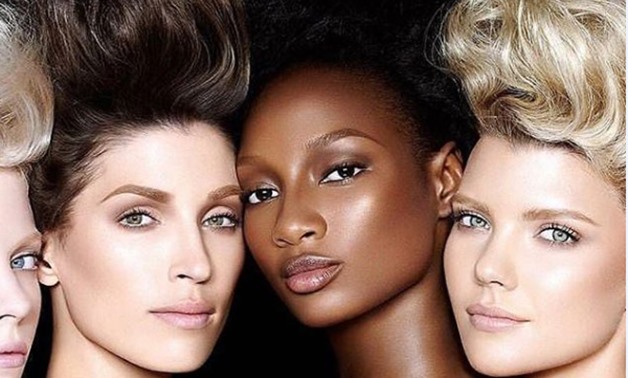Beauty, as a concept, has captivated human minds for centuries, drawing people to debate, interpret, and redefine its meaning. The word “beautiful” is one of the most commonly used descriptors in the English language, yet it encapsulates a complex array of interpretations that transcend mere appearance. Exploring the term in-depth reveals that “beautiful” carries not only aesthetic weight but also emotional, cultural, and even moral significance.

The Aesthetic Dimension of “Beautiful”
At its core, “beautiful” is rooted in the aesthetic experience, appealing to the senses and often associated with harmony, proportion, and symmetry. The origins of the word “beautiful” trace back to Old French beauté, later evolving into the Middle English beaute. Its lineage shows that the word has long been synonymous with what is pleasing to the eye or ear.
However, beauty is not confined to physical appearance. The beauty of a sunset, for instance, stirs deep feelings beyond mere visual appeal—it evokes a sense of peace, wonder, and reverence. Similarly, the beauty of a piece of music resides in its ability to create an emotional landscape, transcending auditory pleasure and reaching into the realm of human experience. Thus, “beautiful” is often used not merely to describe what is visually pleasing but what is emotionally resonant.
Subjectivity in Beauty
Though the aesthetic interpretation of “beautiful” may seem universal, beauty is far from a fixed concept. The phrase “beauty is in the eye of the beholder” underscores the subjectivity of the term. What one person finds beautiful, another may overlook or even reject. Cultural contexts, personal experiences, and individual tastes all shape our understanding of beauty. For example, in different cultures, standards of physical beauty can vary wildly. While one society may prize slender figures, another might revere fuller, curvier bodies.
This subjectivity is not limited to physical attributes. Consider the beauty of ideas or behaviors. To some, the notion of simplicity in design or thought is beautiful, while others find beauty in complexity and intricacy. This reinforces the idea that beauty, and by extension, what is described as “beautiful,” is as much a reflection of the observer as it is of the object.
The Emotional Resonance of Beauty
“Beautiful” also encompasses a deeper, emotional significance that goes beyond surface-level attraction. It is often used to describe experiences, moments, and feelings that stir something profound within us. A “beautiful” act of kindness, for instance, holds no aesthetic value in the traditional sense, yet it resonates deeply because of the moral or emotional implications attached to it.
This emotional dimension of beauty connects to ideas of purity, goodness, and truth. A “beautiful” soul is often described as one possessing qualities such as empathy, integrity, and compassion. In such cases, “beautiful” operates as a metaphorical descriptor, extending the notion of beauty into the moral and emotional realms. It suggests that beauty can be an inward quality, reflecting the best of human nature rather than the superficial veneer of appearances.
The Sublime and the Beautiful
In literature and philosophy, beauty is often contrasted with the sublime. While beauty is associated with harmony, the sublime is linked to awe, grandeur, and sometimes terror. The philosopher Edmund Burke articulated this distinction, noting that beauty inspires feelings of love and affection, while the sublime evokes a sense of power and vastness that can be overwhelming.
Yet, despite this distinction, “beautiful” is sometimes used to describe sublime experiences. A towering mountain range, vast and intimidating, may still be called “beautiful” despite its overwhelming and even frightening presence. This overlap hints at the complexity of beauty—it can be soft and gentle, or vast and powerful, depending on the context.
Cultural Interpretations of Beauty
The interpretation of “beautiful” is profoundly influenced by cultural narratives. In some societies, beauty is tied to ideals of symmetry and perfection, while in others, it is closely linked to uniqueness and the unusual. For example, Japanese aesthetics embrace the concept of wabi-sabi, which celebrates imperfection and transience as integral aspects of beauty. A cracked vase, with its history of use and wear, is considered more beautiful because of its imperfections, not despite them.
Similarly, in Indian culture, beauty is often intertwined with spiritual and moral virtues. Classical Indian texts like the Natyashastra describe beauty as not only physical but also intellectual and emotional, emphasizing the importance of inner beauty and virtue.
This shows that “beautiful” is not merely a descriptor of physical allure but can also embody broader philosophical ideals and cultural values.
Linguistic Variations and Synonyms of “Beautiful”
The English language offers a multitude of synonyms for “beautiful,” each with its own nuanced meaning. Words like “gorgeous,” “stunning,” and “exquisite” often imply a heightened level of beauty, evoking stronger emotional responses. Meanwhile, words like “lovely” and “pretty” might suggest a more subdued, gentle beauty.
Synonyms also carry connotations that extend beyond physical appearance. The word “radiant,” for example, implies not only beauty but also an internal glow or brilliance. “Graceful” suggests beauty in movement or demeanor, while “charming” often refers to a captivating or magnetic quality that may not be strictly aesthetic. The diversity of terms highlights the richness of the English language in capturing the multifaceted nature of beauty.
Conclusion: The Multifaceted Nature of “Beautiful”
In English, the word “beautiful” represents far more than an external attribute. It is an embodiment of aesthetic pleasure, emotional depth, moral goodness, and cultural significance. Its meaning shifts according to context, revealing beauty’s subjectivity and its capacity to capture both the tangible and intangible. Whether describing a breathtaking scene, a virtuous act, or an intricate idea, “beautiful” remains one of the most powerful and versatile words in the English lexicon, serving as a gateway to the human experience of wonder, affection, and meaning.